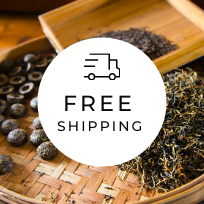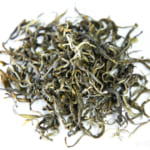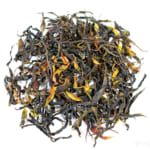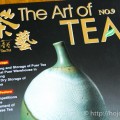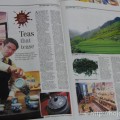- HOME >
- Green Tea
Green Tea
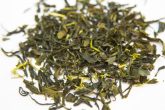
- [2017.03.31]
- The New Release of Tsukigase Asamomi Sencha
Most of the Japanese green teas have undergone intensive rolling process to make it into needle shape, and in general it becomes one of the key characteristics of Japanese green tea. We developed a Japanese green tea that undergone very light rolling. We named it as Tsukigase Asamomi Sencha. In Japanese, “Asamomi” means light rolling. …

- [2017.01.21]
- Single bud green tea, Yunnan Xue Ya just released
We made a green tea named as Yunnan Xue Ya : 雲南雪芽 from the single bud collected from the naturally farmed tea garden that is located more than 2000m. Xue Ya means Snow Bud. It is named after the appearance. Green tea in Yunnan is generally meant for serving at restaurant Since we have been …
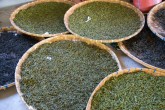
Some people often confused between raw pu-erh and green tea. The appearance of these teas looks similar indeed. Actually, the process of making these two teas are exactly the same, the different is merely the drying method: green tea is dried with hot air dryer while raw pu-erh tea is dried by sunshine. The tea …
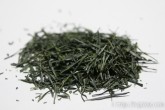
- [2016.02.11]
- Development of lightly rolled Japanese green tea
Japanese green tea is less lasting in brewing Many people may find that the taste and flavor of Japanese green tea do not last over many infusions. The first infusion is strong and flavorful, but on third or even the second infusion, most of Japanese green tea tastes light and plain. Regardless of the brewing …
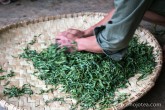
In making teas, most of the teas will undergo rolling process, except some white tea and green tea. The rolling means rubbing or crumpling the tealeaf. Some tea manufacturers use machine to roll the tealeaf, while some people use their hands to roll. I would like to explain the purpose of rolling, and how the …

- [2015.02.24]
- Why do you brew green tea at lower temperature?
Talking about brewing Japanese green tea, many people generally has accepted that it should be brewed at lower temperature as it was always emphasized in most of the internet media and books regarding tea topics, many resources explain that sencha has to be brewed at 70-80 degree C. Nevertheless, I personally prefer to use boiling …

Many of us tend to associate Chinese tea with pu-erh tea and oolong tea. However, more than 70% of tea produced in China is green tea (approximately 1138,000 tons). Literally, we can say that Chinese tea = green tea as a whole. If you have ever travelled to China, you might discover that most of …
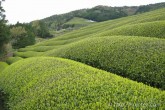
- [2015.01.17]
- Rich body and aftertaste, Uji Sencha Fukamushi
We quietly released Uji Sencha Fukamushi last year. Uji Sencha Fukamushi is not an ordinary Fukamushi sencha. Collaboration between Sencha and Fukamushi Sencha In Japanese, the “fukamushi” means deeply steamed. Fukamushi sencha is produced following the standard process in making a sencha, but a longer steaming process is conducted compared to ordinary sencha. The sencha …
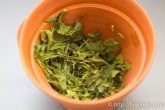
Asamiya sencha (朝宮煎茶) is from Shigaraki, Koga city in Shiga prefecture. Asamiya is the district that belongs to Shigaraki town.The taste of Asamiya sencha is very rich, full body and it gives lingering sweetness on our palate. In fact, full-body character is extremely rare for Japanese green tea. Asamiya is gifted place with special clay …
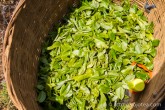
Many of us tend to associate Chinese tea with pu-erh tea and oolong tea. However, more than 70% of tea produced in China is green tea (approximately 1138,000 tons). Literally, we can say that Chinese tea = green tea as a whole. If you have ever travelled to China, you might discover that most of …
PAGE 2 OF 3
- Yunnan Chun Jian Green Tea from High Mountain Gardens
- Yunnan Chun Jian Green Tea is now available.This tea is made from naturally grown leaves harvested from high mountain gardens at 2100m above sea level. It has a rich, long-lasting lingering aftertaste, comparable to raw Pu-erh tea. Yunnan as a Distinctive Tea Growing Region Over the past 20 years, we have explored a wide range …
- Limited Loose Leaf Release of 2025 Da Xue Shan Wild Raw Pu-erh Tea
- We have released the 2025 loose-leaf version of Da Xue Shan Wild Raw Pu-erh Tea.This tea comes from wild tea trees that grow naturally in the high mountains of Yunnan Province, at elevations above 2000 meters. This year, we were only able to secure a small quantity for retail, and the current release is available …
Popular ArticleGreen Tea
 Yunnan Chun Jian Green Tea from High Mountain Gardens
Yunnan Chun Jian Green Tea from High Mountain Gardens- Yunnan Chun Jian Green Tea is now available.This t...
 Rich body and aftertaste, Uji Sencha Fukamushi
Rich body and aftertaste, Uji Sencha Fukamushi- We quietly released Uji Sencha Fukamushi last year...
 Discover the long-lasting flavor profile of 2023 Shi Feng Long Jing
Discover the long-lasting flavor profile of 2023 Shi Feng Long Jing- We have launched the 2023 harvest of Shi Feng Long...
 What is the difference between raw pu-erh and green tea?
What is the difference between raw pu-erh and green tea?- Some people often confused between raw pu-erh and g...
 New Release of Tsuge Zairai Sencha from Sustainable Tea Garden
New Release of Tsuge Zairai Sencha from Sustainable Tea Garden- Tsuge Zairai Sencha 都祁在来煎茶 is made from "zairai" tea...
 Development of lightly rolled Japanese green tea
Development of lightly rolled Japanese green tea- Japanese green tea is less lasting in brewing Many p...
 Taiping Houkui 2019 is now available in our store
Taiping Houkui 2019 is now available in our store- 2019 Taiping Houkui is available in our store. Taipin...
 The Secret of Jasmine Flower for Making Fine Jasmine Tea
The Secret of Jasmine Flower for Making Fine Jasmine Tea- Jasmine tea is made from green tea scented with the...
 Finding good green tea to produce quality jasmine pearl
Finding good green tea to produce quality jasmine pearl- Jasmine tea is one of the very important teas in ou...
 The role of stem in tea
The role of stem in tea- Did you know the stem of tea is an important factor...
Shop Info

Address:Lot No. T-215, 3rd Floor, The Gardens Mall, Mid Valley City, Lingkaran Syed Putra, 59200 Kuala Lumpur
Tel: +603-2287-4537
Business Hour: 10am to 10pm
Category
- New Arrival at HOJO Online Shop
- Featured Articles
- Newsletter
- Types of Tea
- Origin of Tea
- Teapot and Tea Equipment
- Tea Column
- How to enjoy tea
- Tea Processing
- How to choose quality tea
- Tea constituents and functional effect
- Safety of Tea
- Foods
- Tea Business Operation
- Hobby and Outdoor Activity
- Ranking of Tea
- Video
- FAQ
- Media Release
Profile

- AKIRA HOJO
- I invite you to experience my tea selections.I was born in Nagano, Japan. In university, I studied agricultural chemistry, and I have the master degree in food science. I worked in Japanese food industry for 10 years. I involved in R&D, QC and QA. As a factory manager, I implemented ISO9000 series and managed the factory.
- The Art of Tea Magazine
- We posted the article on “The Art of Tea Magazine No.9, the magazine is published in Taiwan. We featured some scientific view about the tetsubin
- New Straits Times
- The Malaysian National Newspaper, New Straits Times featured HOJO Tea on 17-Oct-2007.

